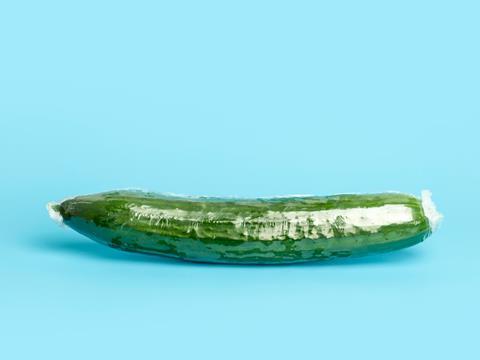
Against a backdrop of rising greenhouse gas emissions and extraordinarily high levels of food waste, what role can packaging play in terms of carbon reduction? Dr. Thomas Gröner, director at TG Pack Solutions, gives us his thoughts on this in his latest opinion piece.
With heat waves of unknown length and heat records in many countries, the 2022 summer has made global warming very tangible. This has an impact on all of us, as greenhouse gas (GHG) emissions are the main contributor to global warming. Let’s see how that links to food waste and packaging.
Unfortunately, one-third of the global food production ends up in the garbage year on year. Studies show that in industrialized countries, the majority of food waste is occurring at the retail and consumer levels. In large cities like London, more than 40% of the food purchased by consumers ends up uneaten in the bin.
The FAO estimates that 1.3 billion tons of food is wasted every year – this is more than three times the amount of food required to feed all the approximately 800 million people on the planet who are starving. As FAO Director Ren Wang pointed out, we need an area as big as China to the produce food that never gets eaten.
The production and disposal of these 1.3 billion tons of food waste generates an enormous amount of GHG emissions in the magnitude of 4.4 gigatons CO2 equivalent annually. This is about 8% of total man-made GHG emissions. If food wastage was a country, its annual GHG emissions would rank number three in the world, after the USA but before India. To make another comparison, the global emissions caused by food wastage equals nearly the emissions of the global road transportation.
What can packaging do here? Adequate packaging preserves food and therefore can help to reduce food waste. The circumstances around living and consumption have changed in recent times: we have more elderly people, more single households, and people live close to work during the week and with their families at a different place during the weekend.
In these situations, packaged food - for example in small sizes - can reduce food waste, because it can be eaten completely before it gets unconsumable. In addition, unopened packs can be stored much longer.
One might argue that this packaging also has a CO2 footprint. This is correct, however studies from Denkstatt and ifeu show that packaging is only 1% of our CO2 footprint whereas food contributes to 15% of our CO2 footprint. Typically, for packaged food, the food itself accounts for more than 98%, and the packaging for less than 2% of the total CO2 footprint of the packed food.
Optimized packaging allowing longer shelf life can reduce food waste in supermarkets and households significantly. Denkstatt has analyzed data for cumbers, meat and cheese. It was clearly shown that adequate and optimized flexible packaging has reduced the total CO2 footprint significantly. The reduction in food waste due to longer shelf life gives a much higher reduction of CO2 equivalents compared to the little additional CO2 equivalents for the flexible packaging.
Here is one example, wrapping a cucumber with thin PE film extended the shelf life in store from three to 14 days, and consequently has halved the waste of unconsumable cumbers in supermarkets. The saving on waste is a saving of 13.5 g CO2 equivalent per cucumber, whilst the thin PE film creates only 4.4 g CO2 equivalent per cucumber, this gives a net saving of more than 9g CO2 equivalent for each cucumber wrapped in thin PE film. This is not even counting the reduced food waste in households, these benefits come on top.
But is all packaging the same? A study done by the Institute for Energy and Environmental Research (ifeu) analyzed different packaging for 125g olives and 400g pasta sauce servings in steel cans, glass jars, and flexible plastic pouches. In both cases, the CO2 footprint of the flexible plastic pouch was only a third of the CO2 footprint of the best rigid packaging. Here the glass jar scored better than the steel can. Interestingly the huge advantage for flexible plastic pouches exists at current recycling rates for steel, glass, and flexibles as well as at assumed 100% recycling rates for all three.
Dr. Thomas Gröner is an R&D and sustainability professional with an entrepreneurial focus, with more than 30 years of experience in packaging across the entire value chain. In 2021 he founded his own company, TG PACK SOLUTIONS, an independent consultancy to the packaging value chain focusing on sustainability and innovation.


















No comments yet